Denitration and Desulfurization System Uses Tungsten Trioxide Denitration Catalyst
- Details
- Category: Tungsten's News
- Published on Monday, 06 June 2016 17:53
- Hits: 620

| Tungsten Oxide Supplier: Chinatungsten Online www.tungsten-oxide.com | Tel.: 86 592 5129696; Fax: 86 592 5129797;Email:sales@chinatungsten.com |
| Tungsten News & Prices, 3G Version: http://3g.chinatungsten.com | Molybdenum News & Molybdenum Price: http://news.molybdenum.com.cn |
FN-2G Tungsten Trioxide Denitration Catalyst
- Details
- Category: Tungsten's News
- Published on Monday, 06 June 2016 17:51
- Hits: 628
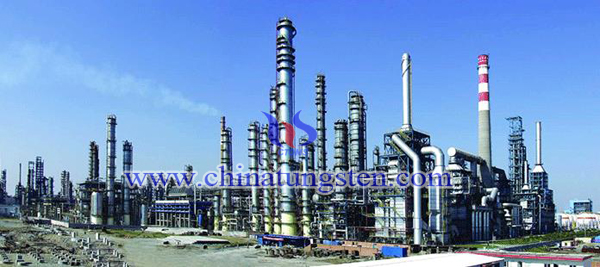
| Tungsten Oxide Supplier: Chinatungsten Online www.tungsten-oxide.com | Tel.: 86 592 5129696; Fax: 86 592 5129797;Email:sales@chinatungsten.com |
| Tungsten News & Prices, 3G Version: http://3g.chinatungsten.com | Molybdenum News & Molybdenum Price: http://news.molybdenum.com.cn |
China Eight Tungsten Enterprises 3rd Meeting Will be Held to Promote Tungsten Market
- Details
- Category: Tungsten's News
- Published on Monday, 06 June 2016 14:26
- Hits: 719
In June 7th China large-scale tungsten mining enterprises will get together in Chaozhou to hold the third meeting. These enterprises has 27 affiliated mine, and more than 50% tungsten concentrate was produced by these companies’ affiliated mine. This is the third time meeting from November 2015 to February 2016.
The first meeting of eight tungsten companies were held in Xiamen,Fujian in November 2015 when tungsten price was decline sharply and the whole economical situation is not good. In this meeting, they decided to limit tungsten concentrate production by 20%, till the end of January 2016 stopped to supply tungsten concentrate. The one of tungsten mines which supplies the larges tungsten concentrate in China domestic market stopped supplied these raw materials within two months, so the market was short in supply and the raw material was tension. Supported by these large-scale companies, other companies also stopped to produce tungsten raw material. Over the course of a month the price sharply rebounded, to mid-December, 2015, tungsten concentrate price reached 65,000 RMB / ton, and monthly price raised was 15,000 RMB / ton.
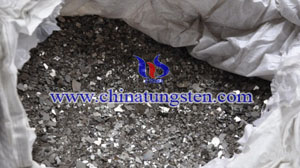
The second meeting was held in Guangzhou in February 2016. At that time tungsten concentrates was 65,000 RMB for each ton. But when the Spring Festival was coming the market demand was poor, and many companies needed cash for circulation, so they needed to sale the raw material for cash circulation and the price went to fell down. In addition, the market confidence frustrated once again and tungsten concentrate prices dropped again. Based on this, the eight tungsten enterprises in Guangzhou was decided reduced 2016 tungsten concentrate domestic production by 15%, and in February the price was 75,000 RMB for each ton. Besides, these companies actively participated in the State Reserve Bureau purchasing and storage business, which was good for tungsten market recovery. As we knew, at the beginning of 2016, the market situation was not good and the market demand did not improve, so the price went up supported by raw materials limitation and tungsten mine slow re-production. When tungsten concentrate supply became tension, then the tungsten concentrate price increased which raised 10,000 RMB for each ton. In May 2016, the price of tungsten concentrates was more than 75,000 RMB for each ton.
June 7, the third meeting of the eight tungsten companies will be held in Chaozhou. Currently tungsten price is continues to fall down, so this meeting plays an important significant for tungsten market recovery. In Eight tungsten companies, there are five companies produce the whole tungsten products which is form tungsten concentrate to finished tungsten products. Two companies produce raw material to melting products and only one company produces tungsten ore. In addition, from the nature point of view, there are two state-owned enterprises and two private enterprises. From the industrial point of view, the companies who run a whole production chain can withstand high-risk and has diverse profit model, but tungsten ore losses will directly affect the company's profits and direct damage to the core interests. On the other hand, the state-owned enterprises will take on more social responsibility and positive response to the government to protect the important task of national strategic resource, but also be able to take a good hope to recover tungsten market and to increase tungsten concentrate prices.
The first two meetings play an important role on tungsten market recovery, so the 3rd meeting is expected to boost tungsten market confidence, soothing pessimism. In this meeting, they will introduce the positive measures to promote the market including limit production, support value, restricted selling and so on. And China government may introduce relevant policies to promote market and the government will continue to promote tungsten concentrate purchasing and storage plan.
It is expected that the tungsten price will slight increase after this meeting, but it will not increase sharply, and this is mainly because of the late summer market demand is light. Besides, if the price is too high will bring high-priced stock reflux to the market, making price fall down, so some the price should slight fluctuations on the basis of current price.
Tungsten market: the limit production of eight tungsten enterprises 3rd meeting will be held, and many manufacturers hold see and wait attitude. Affected by the whole economic situation, many tungsten manufacturers adjustment is insufficient, so there are little inquires. The whole tungsten market operates stable with slight decline.
Rare earth market: rare earth price is stable. At the eve of State Reserve Bureau meeting, secondary market is hot, but rare earth fundamental is stable without large change, which is a significant contrast. So the suppliers and buyers should clam down and wait and see.
Molybdenum market: international molybdenum price continues to fall down, and China domestic price is stable. The whole turnover of molybdenum is not too much, many manufacturers hold see and wait attitude, so the market at the stalemate situation, it is expected that the price has possibility to go up.
| Tungsten Metals Supplier: Chinatungsten Online www.tungsten.com.cn | Tel.: 86 592 5129696; Fax: 86 592 5129797;Email:sales@chinatungsten.com |
| Tungsten News & Prices, 3G Version: http://3g.chinatungsten.com | Molybdenum News & Molybdenum Price: http://news.molybdenum.com.cn |
Withdraw from European Union of Britain will Influence the Foreign Trade of Tungsten Heater
- Details
- Category: Tungsten's News
- Published on Monday, 06 June 2016 10:13
- Hits: 646
Currently, there is only less than a month before the referendum for withdrawing from the European Union of Britain. The EU is an economic-political union of 28 member states that are located primarily in Europe. Every country maintains a positive attitude to this referendum, and the majority of investors believe that the chance to withdraw from the EU of Britain is small. Since British Prime Minister David Cameron announced that referendum would be held in June 23, the pound has been in a state of sharp fluctuations, showing that the event is bound to bring about a crisis for the international economy. So if Britain really withdraws from the European Union, will it have any effect to China. The following are briefly discussions.
Firstly, the European debt crisis that broke out before has brought a great impact to China's economy, however, if Britain whose economic trends is better decides to draw out EU at present, which is bound to hamper the recovery of EU economy, even it can lead to the setback of EU economic. In this situation, EU will want to take a more protectionist policy in international trade, which would hinder bilateral trade between China and the EU countries. Thereby impeding the export of tungsten heater to European countries.
Secondly, if Britain withdraws from EU, Britain cannot be constrained by many policies of this organization, and then the related research on high technology of Britain will be unhindered flow into China. Therefore, it would hit many domestic related industries, which will have a negative impact on the development of related businesses in China. And some enterprises which produce tungsten heater may be eliminated because of the backward technology. On the other hand, the pound may depreciate because of the exit, while in the process of RMB internationalization is accelerating, which will lead to the foreign exchange market turbulence.

| Tungsten Metals Supplier: Chinatungsten Online www.tungsten.com.cn | Tel.: 86 592 5129696; Fax: 86 592 5129797;Email:sales@chinatungsten.com |
| Tungsten News & Prices, 3G Version: http://3g.chinatungsten.com | Molybdenum News & Molybdenum Price: http://news.molybdenum.com.cn |
Tungsten Mining Enterprises’ Positive Action Make Tungsten Market Worth Expecting
- Details
- Category: Tungsten's News
- Published on Friday, 03 June 2016 19:37
- Hits: 884

| Tungsten Oxide Supplier: Chinatungsten Online www.tungsten-oxide.com | Tel.: 86 592 5129696; Fax: 86 592 5129797;Email:sales@chinatungsten.com |
| Tungsten News & Prices, 3G Version: http://3g.chinatungsten.com | Molybdenum News & Molybdenum Price: http://news.molybdenum.com.cn |
Sky-High Green Ticket Reproduced, Tungsten Trioxide Denitration Catalyst Boosts Air Purification
- Details
- Category: Tungsten's News
- Published on Friday, 03 June 2016 19:03
- Hits: 654
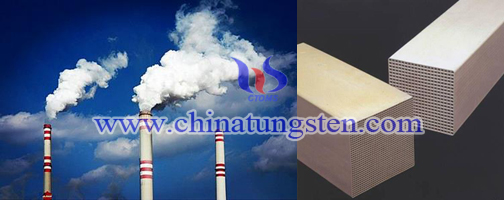
| Tungsten Oxide Supplier: Chinatungsten Online www.tungsten-oxide.com | Tel.: 86 592 5129696; Fax: 86 592 5129797;Email:sales@chinatungsten.com |
| Tungsten News & Prices, 3G Version: http://3g.chinatungsten.com | Molybdenum News & Molybdenum Price: http://news.molybdenum.com.cn |
Tungsten Copper Liner and Terminal Sensitive Projectile
- Details
- Category: Tungsten's News
- Published on Friday, 03 June 2016 15:09
- Hits: 1281
Recently, famous Chinese scientist Yang Shaoqing ammunition invited in the CCTV program for the audience of a presentation mysterious "Tank Terminator" – terminal sensitive projectile. Terminal sensitive projectile is also called as sensor detonated ammunition, which is a new kind of anti-armor weapon developed in 1970s. It can detect the presence of a target terminal ballistics, and can make warhead explosion direction towards the goal, mainly for autonomous attack armored vehicles top armor, it has long distance, high hit rate, good penetration effect in the 21st century information battlefield.
TSP is composed of major shells and propellant charge composition. Major missile includes elastomers, time fuze, projectile structure, end-sensitized bullets. And the end-sensitized bullet consists of save spin and steady deceleration scanning systems, sensor systems, central controller, advanced warhead, power, etc. Wherein the central controller is equivalent sensitivity projectile brain centers, its main role is to drive control, data acquisition, signal conversion and fire decision-making. But the final damage caused to the target is the EFP warhead. EFP- Explosively-Formed Projectile, heat liner formed by long thin jet of metal armor, except that after the EFP warhead explosion, shaped charge liner crushed deformed, forming a stout and dense penetrator pills, which speeds up about 2000 m/s, less than the shaped charge jet velocity (8000 m/s), the jet penetration is deeper.
TSP self-forging fragment warhead usually uses heavy metals to fabricate metal liner, which requires good ductility, high density and a reasonable price. From the properties, gold and rhenium is appropriate, but they cost a lot; although depleted uranium armor can meet the requirements, it still radioactive and many countries oppose to use. So copper used widely in liner in early days. Today, tantalum and tungsten copper liner is two main types of liner materials. Tungsten copper shaped charge jet of tungsten have a higher head speed at the time of penetrating armor can shorten the time through, thereby facilitating against reactive armor. But its crisp texture and poor powder adhesion, good ductility copper added contribute to its shape, so the stability of the jet improved and prevent from breaking.

| Tungsten Copper Supplier: Chinatungsten Online tungsten-copper.com | Tel.: 86 592 5129696; Fax: 86 592 5129797;Email:sales@chinatungsten.com |
| Tungsten News & Prices, 3G Version: http://3g.chinatungsten.com | Molybdenum News & Molybdenum Price: http://news.molybdenum.com.cn |
Adjustments of Export Tax Improve Foreign Trade of Tungsten Heater
- Details
- Category: Tungsten's News
- Published on Friday, 03 June 2016 11:17
- Hits: 1179
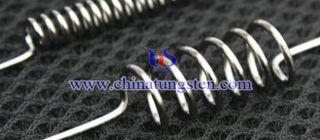
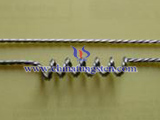
In recent years, with the rapid development of the network, foreign trade in China has also increase, considering that the comprehensive utilization of both domestic and foreign markets and resources, since January 1, 2016, China has made some adjustments for the relevant economy policy on foreign trade.
Tungsten Trioxide Photocatalyst Disarming Intruder from Inside
- Details
- Category: Tungsten's News
- Published on Thursday, 02 June 2016 18:29
- Hits: 721
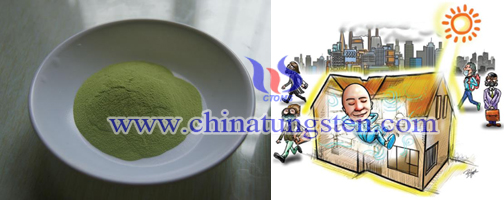
| Tungsten Oxide Supplier: Chinatungsten Online www.tungsten-oxide.com | Tel.: 86 592 5129696; Fax: 86 592 5129797;Email:sales@chinatungsten.com |
| Tungsten News & Prices, 3G Version: http://3g.chinatungsten.com | Molybdenum News & Molybdenum Price: http://news.molybdenum.com.cn |
Tungsten Carbide Button Developments
- Details
- Category: Tungsten's News
- Published on Thursday, 02 June 2016 16:37
- Hits: 617
Recent years, due to mechanization and intelligent technology developments, tungsten carbide products used for drilling has a rapid development. The main trends include the following: ultra-fine or nano structure tungsten carbide, high-temperature powder based tungsten carbide, functionally gradient carbide, carbide modified binder, double bonded carbide and WC-Co-diamond three phase composite hard materials and so on.
1. Ultra-fine or nano structure tungsten carbide button: It is one of the hotspot recently. In the early 1990s, related researchers began to focus on grain refining preparing submicron ultrafine and nano-structured carbide launched a study. This is owing to with the continuous grain refinement, the density, the hardness, the toughness and the wear resistance of tungsten carbide materials will be remarkably improved. At the same time drilling equipment for drilling requirements are also getting higher and higher, especially high-pressure drilling of wear resistance and toughness carbide button have strict requirements, and ultrafine grain cemented carbide can fully meet its performance.
2. High-temperature powder based tungsten carbide button: It is one kinds of new process that high-temperature reducing raw material powder and high temperature carbonization, which the preparation of WC powder has integrity, high strength and high energy storage. Compared with conventional vacuum heat treatment, average footage carbide button ratio increased by 50%, drilling speed of nearly 100%, with an average increase of about 100% abrasion resistance, product quality and stability and service life have been greatly improved.
3. Functionally Gradient carbide buttons: In sintering or heat treatment process through the appropriate climate-induced diffusion in the alloy C, and through a chemical reaction so that other members rearrangement and distribution, leading to changes in alloy composition and structure along a certain direction, forming a gradient structure, different parts with different functions. Functionally Gradient carbide buttons usually low carbon alloy carburizing process (pass into CH4, CO and other carbon-containing gas) method of extraction, the treated W and Co ball distribution in the diameter direction. This structure gives button higher wear resistance and toughness, both functionally graded cemented carbide DTH drill, drill or cone ball tooth drill bit life have a significantly improved.
4. New binder modifying carbide buttons: Treatment with molten metal (Ni or Si as alloying additive elements), Ni and Si alloy can significantly improve the ability of anti-fatigue cracks. In addition, Ni sintered alloy melt to permeate the process of WC skeleton occurred off junction formed developed WC / Co sintered alloy phase interface, the grain size is reduced, thereby the fracture toughness increases. The results show that the solder alloy cone rotary drilling bit, the working efficiency is improved by 1.8 times.
5. Double bonded carbide: Compared with conventional tungsten carbide, tungsten carbide pellet is composed of sintered pellets instead of hard compound. The sintered pellets mixed with a binder metal and a second sintering, thereby making the fracture toughness without lowering the hardness of the premise of a substantial increase.
6. WC-Co-diamond three-phase composite hard materials: High temperature high pressure synthesis, powder / polymer mixture extruded into green compacts, and then consolidated by high temperature and pressure synthesis of diamond. It has many advantages, such as reducing the mismatch in thermal expansion and elastic stress off the diamond enhanced; diamond enhanced surface and the wear resistance improved; Fracture toughness of WC-Co- diamond composite surface is excellent, improve service life.
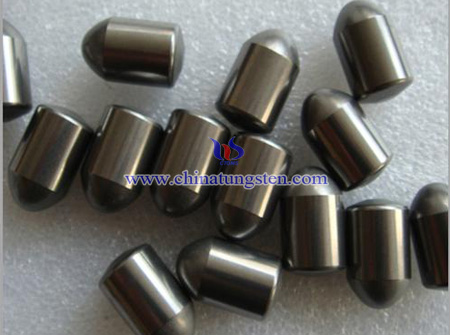
| Tungsten Carbide Supplier: Chinatungsten Online tungsten-carbide.com.cn | Tel.: 86 592 5129696; Fax: 86 592 5129797;Email:sales@chinatungsten.com |
| Tungsten News&Tungsten Prices, 3G Version: http://3g.chinatungsten.com | Molybdenum News & Molybdenum Price: http://news.molybdenum.com.cn |




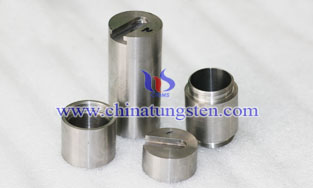


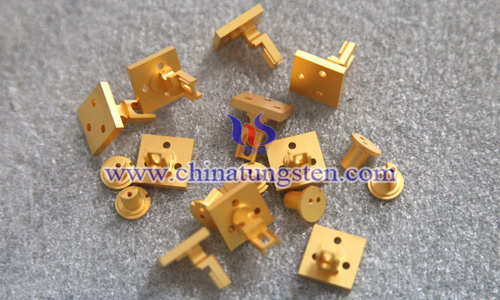
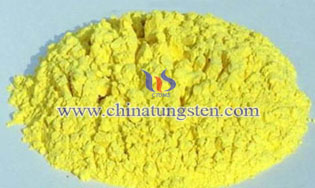
 sales@chinatungsten.com
sales@chinatungsten.com